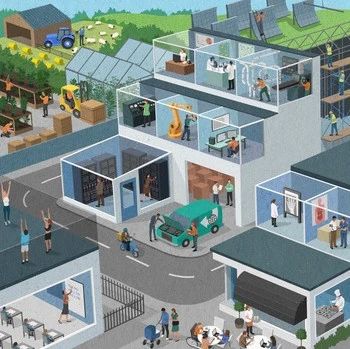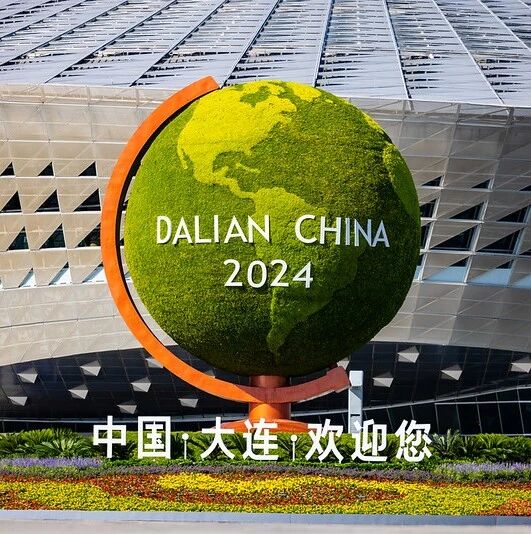
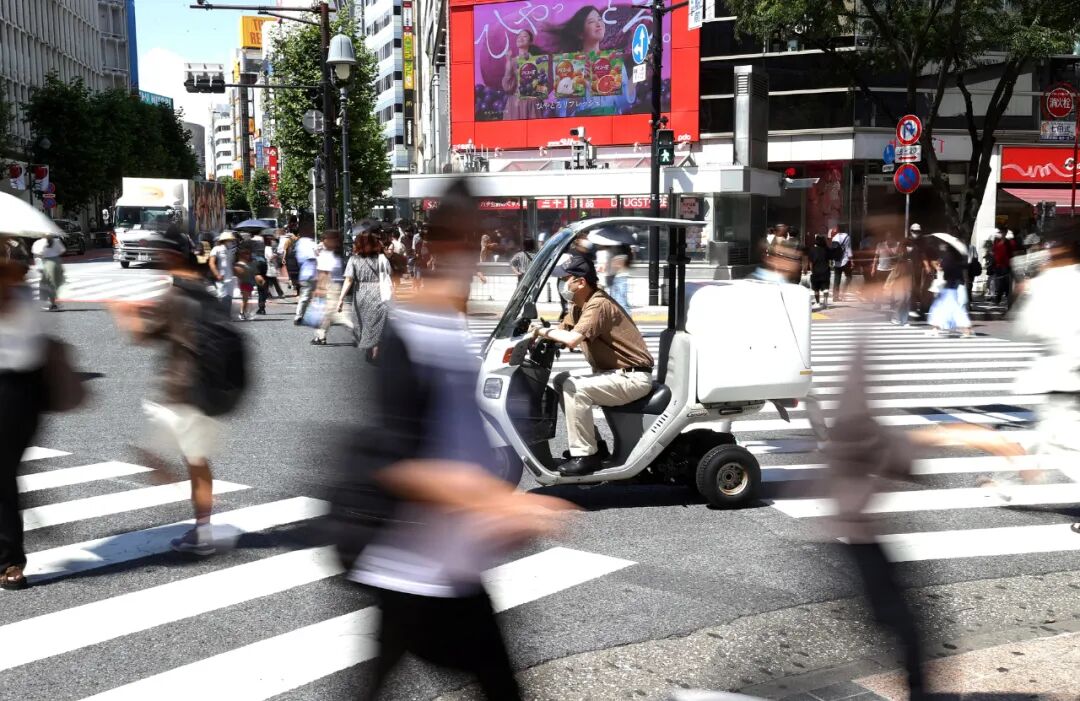
The world is facing a series of pivotal moments.
Image source: Reuters/Kai Pfaffenbach
Kate Whiting
Senior Writer for the Forum Agenda
So far, 2025 has already seen significant global changes, including heightened geopolitical instability, accelerating impacts of artificial intelligence, and ongoing shifts in the labor market.
New U.S. tariffs and other economic factors are reshaping the global trade landscape. Meanwhile, while progress has been made in the energy transition, the gender gap persists.
The following 7 charts from the World Economic Forum report highlight this year’s pivotal moments.
As 2025 draws to a close and dictionaries look back on the year's hottest words, "turning point" could very well make the list.
From the profound impact of artificial intelligence to European Commission President Ursula von der Leyen's remarks on China-Europe relations, this term has been frequently appearing in media reports.
Meanwhile, at the World Economic Forum's annual meeting this January, Forum President and CEO Børge Brende noted that "we are currently at a turning point," adding that the event took place during "one of the most uncertain geopolitical and geoeconomic moments in generations."
Since then, several forum reports have surveyed expert opinions, offering a comprehensive analysis of the forces shaping today’s world. These drivers include economic and geopolitical fragmentation, the accelerating impact of AI, and the urgent need for equity and sustainability.
2025 is already halfway through—how is the global landscape evolving? And what are the key themes to watch? The following seven charts will help you trace the developments so far this year.
1. Geopolitical Divisions and Global Risks Reach New Highs
In the "2025 Global Risks Report" released in January, the world has grown increasingly pessimistic about the outlook for the coming years, with 52% of chief risk officers anticipating a period of "uncertainty" in the near term. Among the top concerns are conflicts, misinformation, and extreme weather events.
Quick Reference:Armed conflicts between nations have emerged as the top risk for 2025. Generative AI is fueling the spread of misinformation, and combined with deepening societal polarization, the escalating turmoil is pushing the world toward one of its most divided periods since the Cold War.
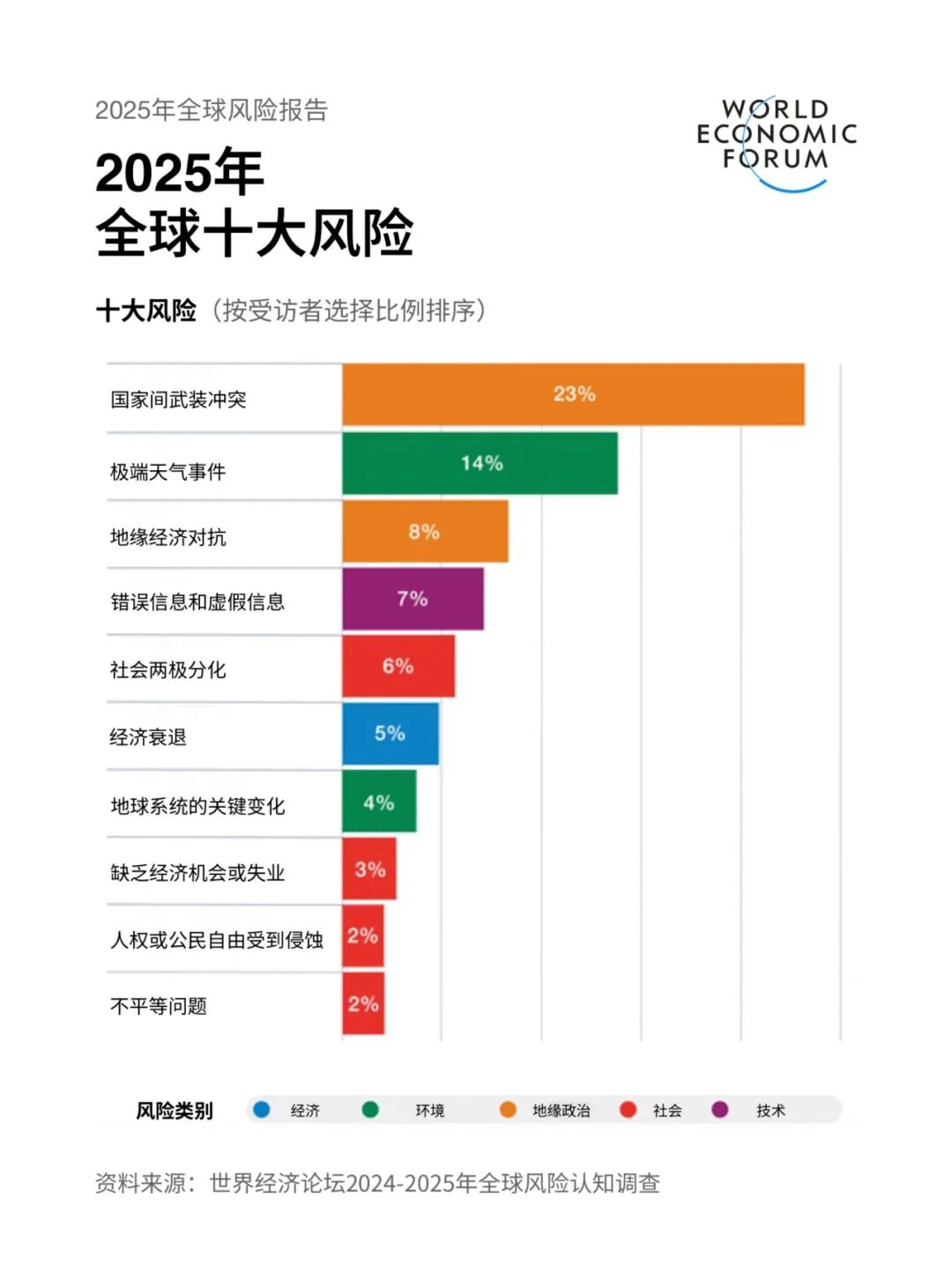
Global Situation:Currently, there are more than 110 armed conflicts ongoing around the globe, with some gaining far greater attention than others. The Russia-Ukraine conflict has now entered its third and a half year, claiming the lives of over 350,000 Ukrainian and Russian soldiers. U.S. President Donald Trump has called for an end to the war by August 8. Meanwhile, the Israel-Gaza conflict, which erupted in October 2023, has already pushed Gaza into a state of famine, while G7 leaders are considering recognizing a Palestinian state. At the same time, this year has seen a record-breaking surge in extreme weather events—ranging from droughts and wildfires in the U.S. to devastating flash floods—highlighting how these phenomena are becoming more frequent, longer-lasting, and increasingly severe. According to data from NASA, such events are intensifying at an alarming rate. In July of this year, the International Court of Justice (ICJ) ruled that all nations have a legal obligation to cut emissions and take urgent action to protect the climate.
2. AI Revolution Accelerates
As highlighted in the forum’s "Industries in the Age of Intelligence" series, AI is transitioning from mere conceptual hype to a transformative force. Its impact is already permeating every aspect of business—ranging from operations and content creation to supply chains and sales. For instance, in the consumer industry, AI-powered processes are expected to cut content production costs by up to 60% while boosting conversion rates by as much as 20%.
Quick Reference:By 2038, responsible and human-centered AI is expected to unlock $1.2 trillion in value for the consumer industry.
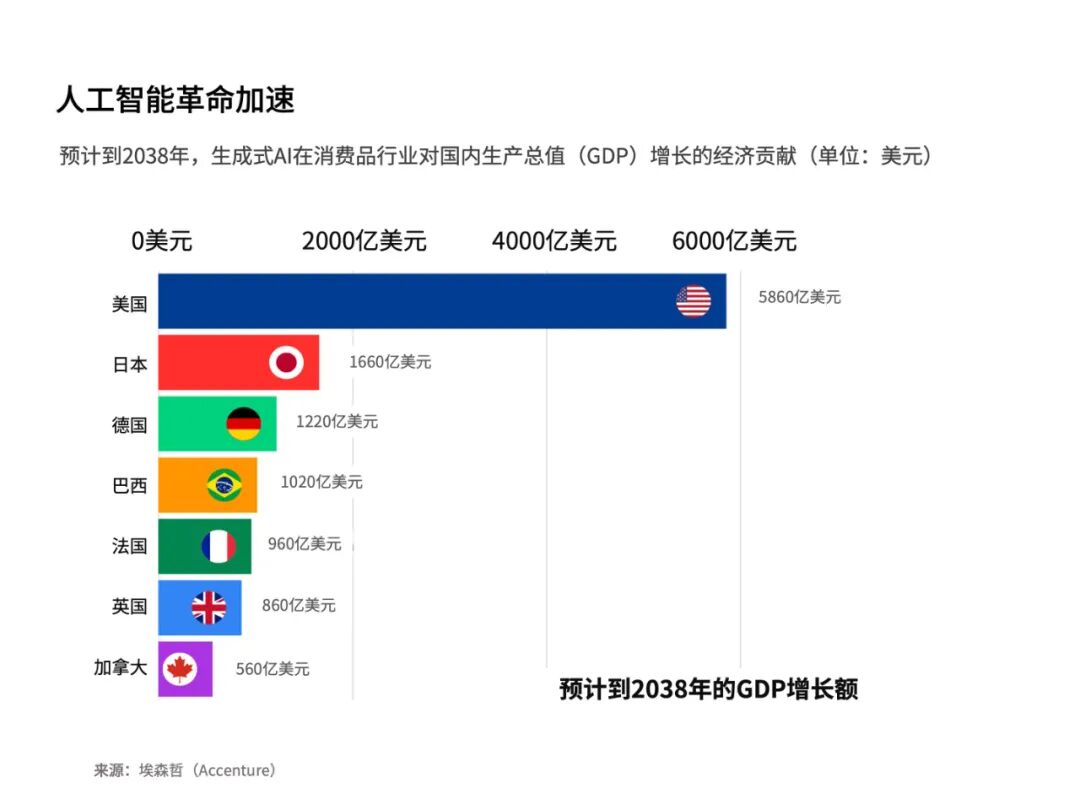
Global Situation:2025 marked the year of the "DeepSeek phenomenon" and the rise of AI agents. Chipmaker NVIDIA and Microsoft both surpassed a market capitalization of $4 trillion, becoming the first companies in history to reach this milestone. Investors believe Microsoft’s investments in data centers and OpenAI are already yielding significant returns. Meanwhile, data center electricity demand is projected to surge from 1% of global energy consumption in 2022 to over 3% by 2030. In its white paper, "The Energy Paradox of AI: Balancing Challenges and Opportunities," the World Economic Forum highlights that AI could also help businesses cut energy usage by as much as 60%, ultimately striking a crucial balance.
3. The global labor market is currently in a state of turmoil.
The "2025 Future of Work Report" highlights that artificial intelligence, along with several other powerful forces, has emerged as a key driver reshaping the employment landscape. Notably, climate change and the green economy are now influencing nearly half of employers' hiring strategies, fueling a surge in demand for roles tied to sustainable development and AI/tech-related fields—while traditional clerical and administrative positions continue to decline.
Reskilling and inclusivity have become pressing priorities. Many employers highlight significant skills gaps, fueling the growing trend of lifelong learning. Meanwhile, disparities in employment opportunities persist along gender and age lines.
Quick Reference:86% of employers expect AI and data analytics to reshape their industries. Generative AI will both create jobs—projecting an addition of 170 million positions by 2030—and eliminate roles, as 92 million jobs are set to be automated.
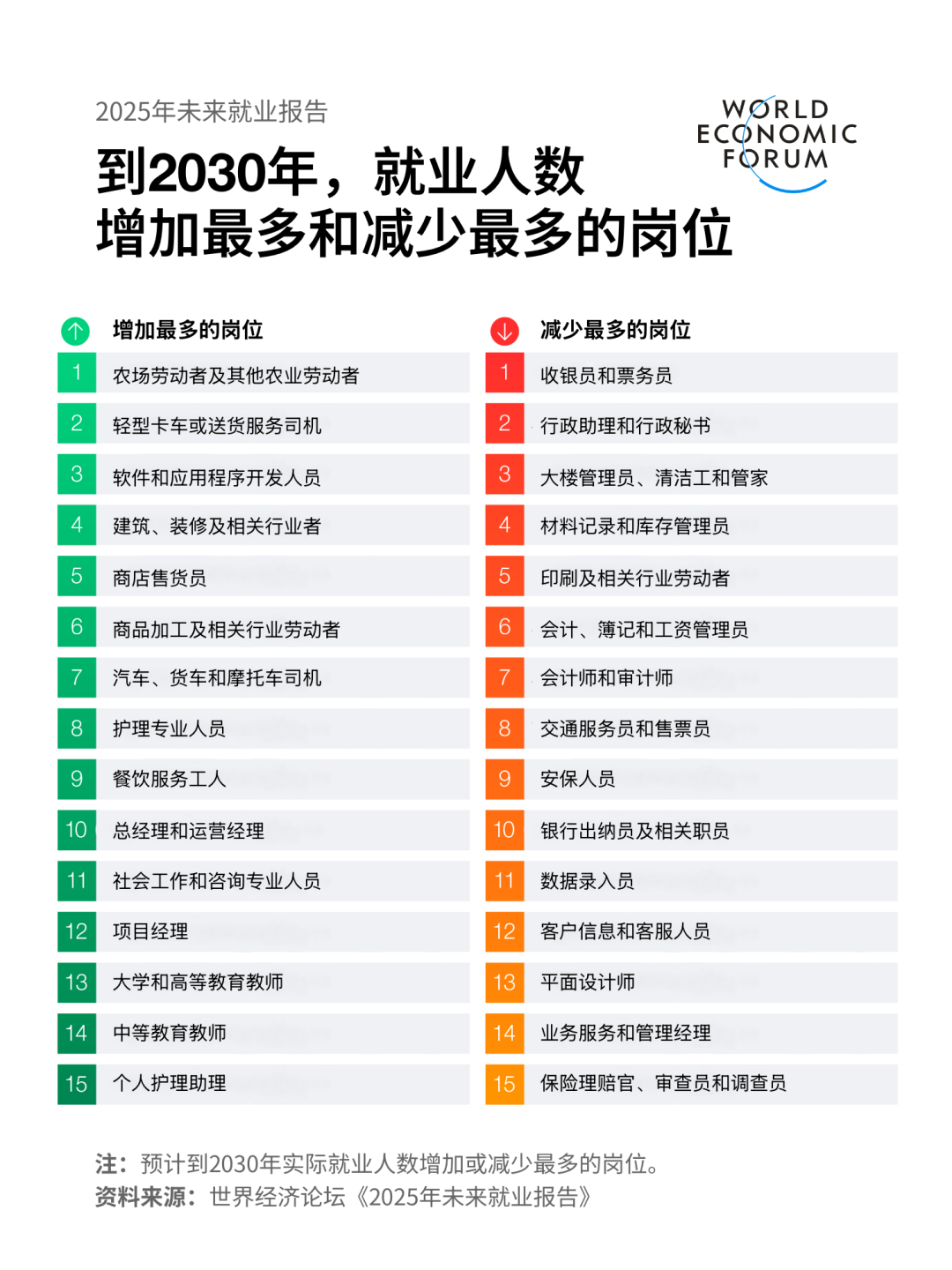
Global Situation:So far, tech companies have already cut thousands of jobs in 2025, with many of these layoffs attributed to AI. However, the reality is more nuanced than simple job replacement. While major corporations have announced large-scale workforce reductions—partly to free up funds for AI investments—they aren’t solely driven by AI displacing employees. Although AI poses a clear threat to many traditional entry-level roles, it’s also giving rise to entirely new positions, such as AI engineers, prompt engineers, and data scientists. Meanwhile, the growing trend of "return-to-office" mandates has added another layer of complexity: only 42% of employees are now willing to commit to a five-day-a-week office presence, down from 54% at the beginning of 2022. Notably, women and parents with children are particularly resistant to this shift, increasingly viewing flexible work arrangements as a non-negotiable right they’re unwilling to give up.
4. Trump Tariffs Redraw the Global Trade Map
In May, the World Economic Forum’s “Chief Economists’ Outlook” revealed that global economic prospects have deteriorated since the beginning of the year, with rising economic nationalism and volatile tariffs intensifying uncertainty and undermining long-term decision-making.
,,20252.3%1,,()0.65.7
Quick Reference:5,97%
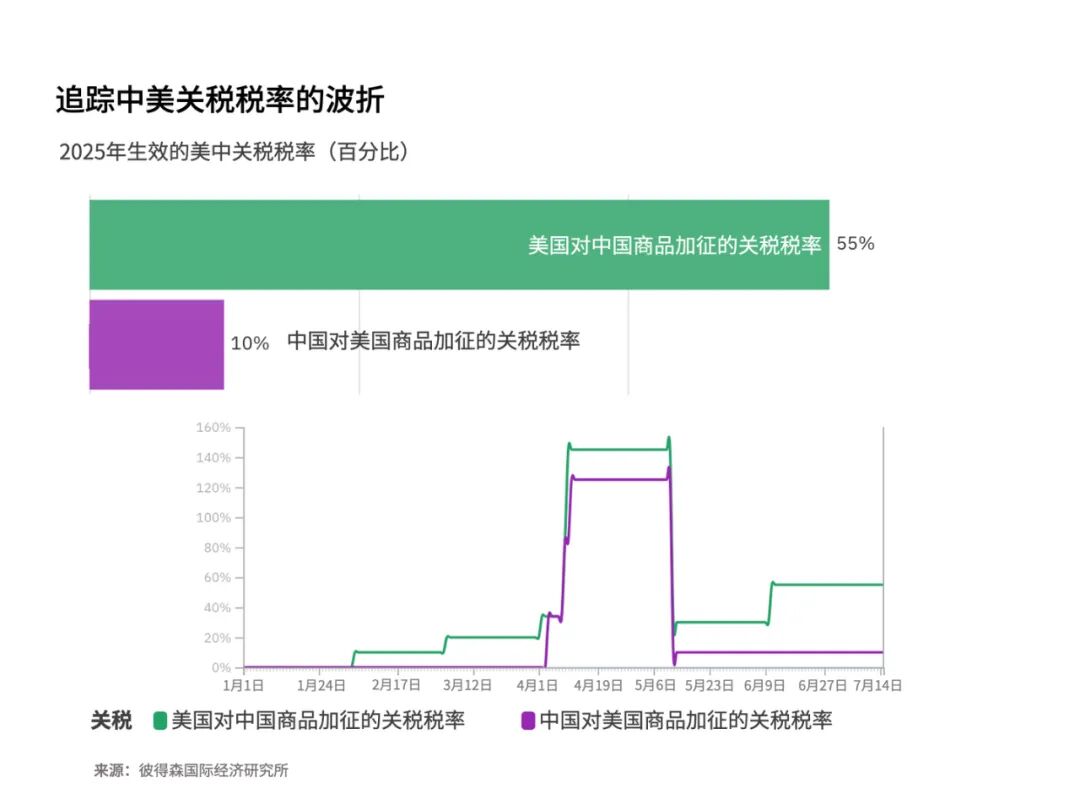
Global Situation:1,2030,42,“”,10%,(50%)(25%)20257,18.2%,1934,(6%)/(25%),,,,8750%
5. ,
6(ETI),,2,,
,(AI)
Quick Reference:,20251.1%,,
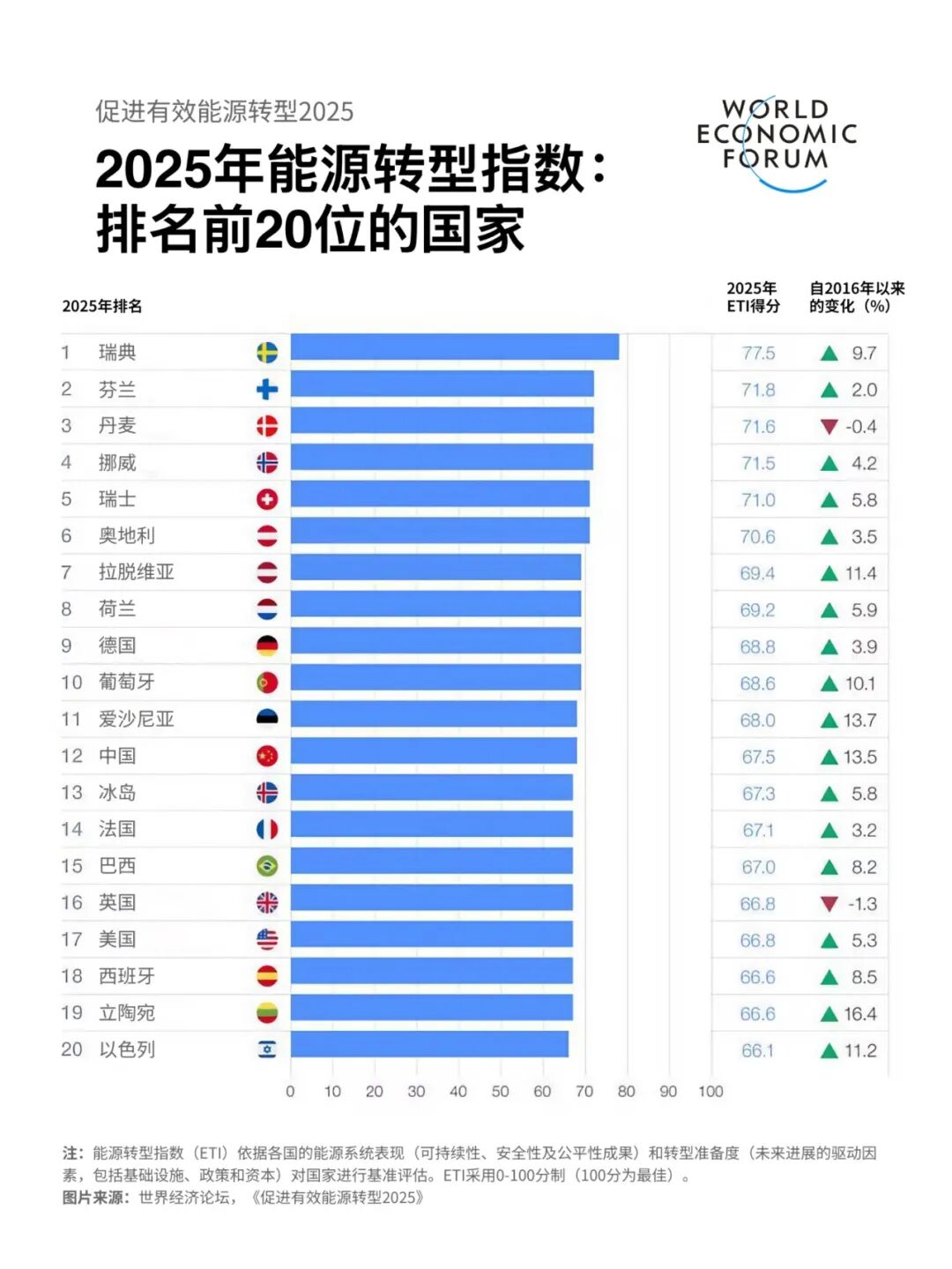
Global Situation:2025,,41%,53%,202492.5%,,20252020,10%20244.3%,,
6. ——AI
2025,,68.8%,,12390%,,
,,(STEM),
Quick Reference:,AI,(57% vs. 43%),AI,(46% vs. 54%)
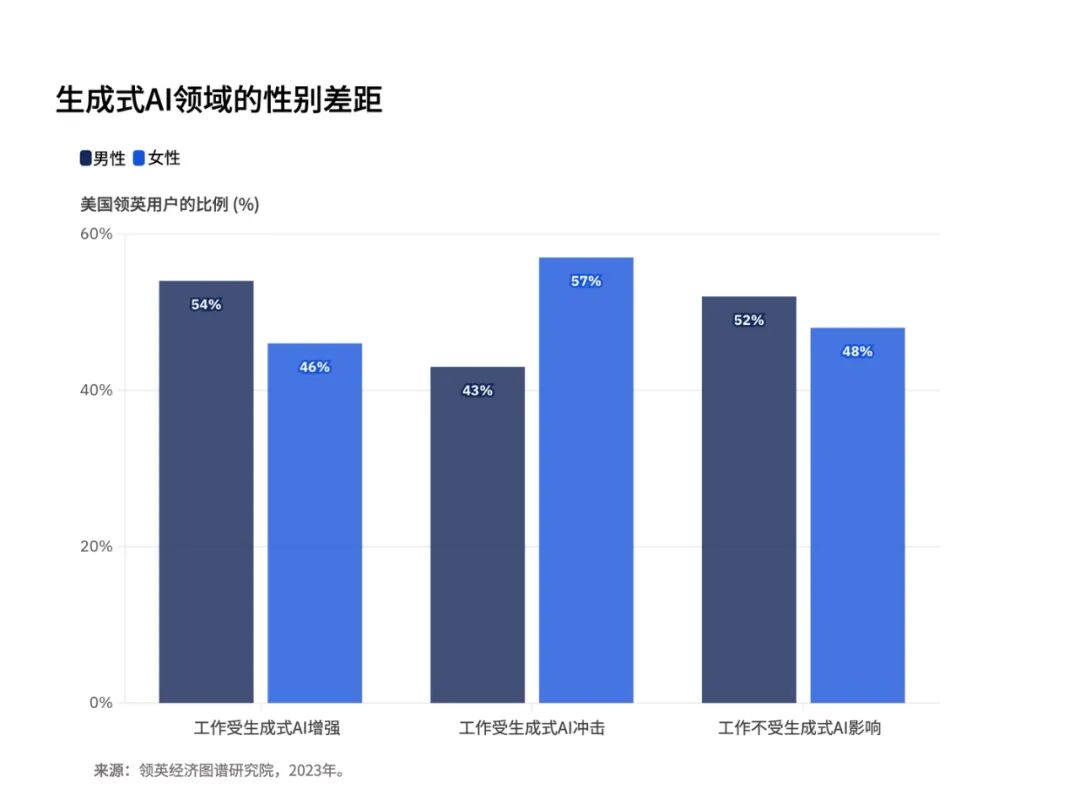
Global Situation:1,,,2700(2.5),2040GDP4000,5,,,,,AI,,AI,AI,,
7.
,:2080,6518
:,“”,
Quick Reference:2060,60%65
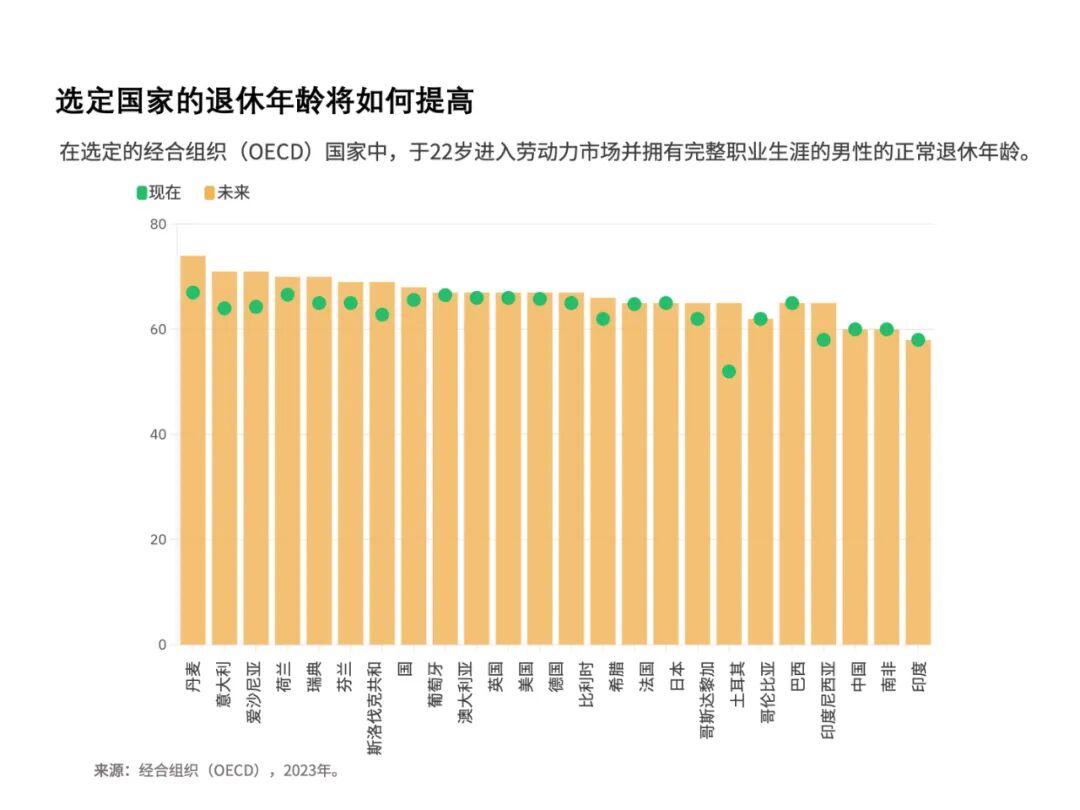
Global Situation:202582,,(),,65,,,,
,,:
,
,
,
,
,AI

This article is translated from the World Economic Forum's Agenda blog; the Chinese version is for reference purposes only.Feel free to share this in your WeChat Moments; for reprints, please leave a message at the end of the article or on our official.
Translated by: Di Chenjing | Edited by: Wang Can
The World Economic Forum is an independent and neutral platform dedicated to bringing together diverse perspectives to discuss critical global, regional, and industry-specific issues.
Follow us on Weibo, WeChat Video Channels, Douyin, and Xiaohongshu!
"World Economic Forum"
